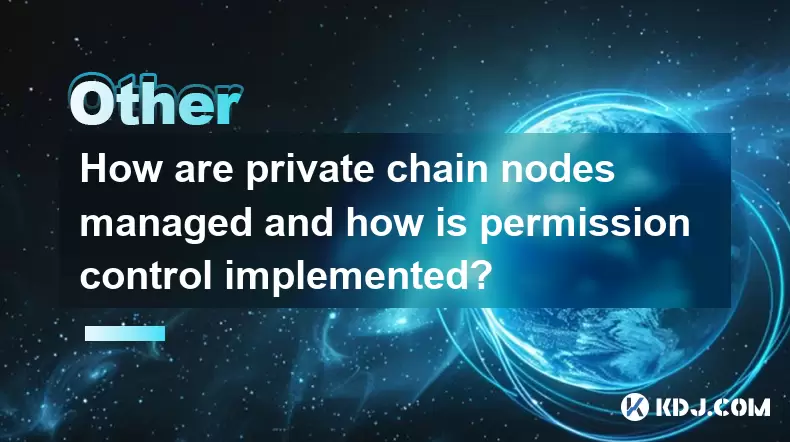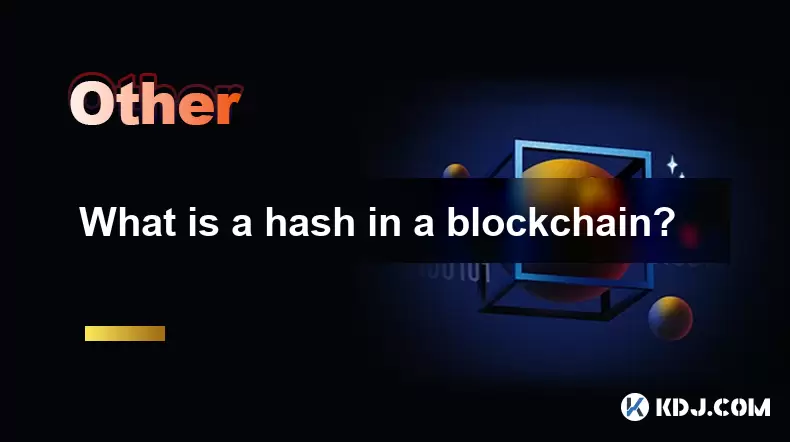-
 Bitcoin
Bitcoin $113900
-1.39% -
 Ethereum
Ethereum $3517
-4.15% -
 XRP
XRP $3.009
1.59% -
 Tether USDt
Tether USDt $0.9997
-0.04% -
 BNB
BNB $766.8
-1.41% -
 Solana
Solana $164.6
-2.38% -
 USDC
USDC $0.9998
-0.02% -
 TRON
TRON $0.3277
0.65% -
 Dogecoin
Dogecoin $0.2023
-1.67% -
 Cardano
Cardano $0.7246
0.05% -
 Hyperliquid
Hyperliquid $38.27
-4.77% -
 Sui
Sui $3.528
-0.52% -
 Stellar
Stellar $0.3890
-0.73% -
 Chainlink
Chainlink $16.16
-2.69% -
 Bitcoin Cash
Bitcoin Cash $539.9
-4.38% -
 Hedera
Hedera $0.2425
-2.00% -
 Avalanche
Avalanche $21.71
-0.97% -
 Toncoin
Toncoin $3.662
5.73% -
 Ethena USDe
Ethena USDe $1.000
-0.02% -
 UNUS SED LEO
UNUS SED LEO $8.964
0.35% -
 Litecoin
Litecoin $107.7
2.33% -
 Shiba Inu
Shiba Inu $0.00001223
-0.40% -
 Polkadot
Polkadot $3.617
-0.97% -
 Uniswap
Uniswap $9.052
-2.49% -
 Monero
Monero $295.1
-3.79% -
 Dai
Dai $0.9999
0.00% -
 Bitget Token
Bitget Token $4.315
-1.85% -
 Pepe
Pepe $0.00001060
0.11% -
 Cronos
Cronos $0.1342
-2.72% -
 Aave
Aave $256.0
-0.87%
How are private chain nodes managed and how is permission control implemented?
Private chain nodes are crucial for secure blockchains, requiring setup, authentication, monitoring, and maintenance, while permission control via RBAC and smart contracts ensures data integrity.
May 16, 2025 at 04:07 pm

Managing private chain nodes and implementing permission control are crucial aspects of maintaining a secure and efficient blockchain network. In this article, we will delve into the specifics of how these processes are carried out, focusing on the technical and operational aspects relevant to the cryptocurrency circle.
Understanding Private Chain Nodes
Private chain nodes are the backbone of a private blockchain network. These nodes are typically run by trusted entities within a closed network, and they play a critical role in validating transactions and maintaining the integrity of the blockchain. Unlike public blockchains, where anyone can run a node, private blockchains restrict node operation to authorized participants only.
Node Management in Private Chains
Managing nodes in a private chain involves several key steps and considerations. The process ensures that only authorized entities can participate in the network, thereby maintaining the privacy and security of the blockchain.
Node Setup: The first step in managing private chain nodes is setting them up. This involves installing the necessary software and configuring the node to connect to the private network. Each node must be assigned a unique identifier and configured with the network's specific parameters.
Node Authentication: To ensure that only authorized nodes can join the network, a robust authentication mechanism is required. This typically involves using certificates or other cryptographic methods to verify the identity of each node before allowing it to connect.
Node Monitoring: Continuous monitoring of nodes is essential to ensure the health and performance of the network. This includes checking for uptime, performance metrics, and any anomalies that might indicate a security breach or malfunction.
Node Maintenance: Regular maintenance is necessary to keep nodes running smoothly. This can include software updates, hardware upgrades, and routine checks to ensure that the nodes are operating within the network's specifications.
Implementing Permission Control
Permission control in private blockchains is critical for maintaining the confidentiality and integrity of the data being processed. It involves setting up rules and mechanisms that dictate who can perform certain actions on the blockchain.
Role-Based Access Control (RBAC): One common method of implementing permission control is through RBAC. This involves defining roles within the network and assigning specific permissions to each role. For example, some roles may be allowed to submit transactions, while others may only be able to view the blockchain's state.
Smart Contract-Based Permissions: Another approach is to use smart contracts to manage permissions. Smart contracts can be programmed to enforce rules and permissions dynamically, allowing for more flexible and automated control over who can do what on the blockchain.
Permissioned Ledger: A permissioned ledger is a fundamental aspect of private blockchains. It ensures that only authorized entities can read or write to the blockchain. This is typically managed through a combination of node authentication and permission control mechanisms.
Configuring Node Permissions
Configuring permissions for nodes in a private blockchain involves setting up the necessary rules and enforcing them through the network's infrastructure. Here's how it can be done:
Define Permission Levels: Start by defining the different levels of permissions that will be available in the network. This can include read, write, and execute permissions, as well as more granular controls based on specific actions or data types.
Assign Permissions to Roles: Once the permission levels are defined, assign them to the various roles within the network. This can be done through a centralized management system or through smart contracts that automatically enforce the permissions.
Implement Permission Checks: Implement checks within the blockchain's software to ensure that only authorized actions are performed. This can involve validating the identity of the node and checking its assigned permissions before allowing any operation to proceed.
Audit and Review: Regular audits and reviews of the permission system are necessary to ensure that it remains effective and secure. This can involve checking for any unauthorized changes to permissions and ensuring that the system is functioning as intended.
Securing Private Chain Nodes
Security is paramount when managing private chain nodes. Here are some key practices to ensure the security of the network:
Encryption: Use strong encryption for all communications between nodes to prevent eavesdropping and data tampering. This includes encrypting data at rest and in transit.
Firewalls and Network Security: Implement firewalls and other network security measures to protect the nodes from external threats. This can include restricting access to the nodes to only trusted IP addresses.
Regular Security Audits: Conduct regular security audits to identify and address any vulnerabilities in the network. This can involve penetration testing and other security assessments to ensure that the nodes are secure.
Access Control: Implement strict access control measures to ensure that only authorized personnel can access the nodes. This can include multi-factor authentication and other security measures to prevent unauthorized access.
Best Practices for Node Management and Permission Control
To ensure the effective management of private chain nodes and the implementation of permission control, consider the following best practices:
Documentation and Training: Maintain comprehensive documentation of the node management and permission control processes. Provide training to all personnel involved in managing the network to ensure that they understand the procedures and security measures.
Automated Monitoring and Alerting: Use automated tools to monitor the health and performance of the nodes and to alert administrators to any issues. This can help to quickly identify and address problems before they impact the network.
Regular Updates and Patching: Keep the nodes and the blockchain software up to date with the latest security patches and updates. This can help to protect the network from known vulnerabilities and ensure that it remains secure.
Scalability and Flexibility: Design the node management and permission control systems to be scalable and flexible. This can help to accommodate growth in the network and changes in the permission requirements over time.
Frequently Asked Questions
Q1: How does node authentication work in a private blockchain?
Node authentication in a private blockchain typically involves using cryptographic methods such as digital certificates. Each node is issued a certificate by a trusted Certificate Authority (CA), and this certificate is used to verify the node's identity before allowing it to join the network. This ensures that only authorized nodes can participate in the blockchain.
Q2: What are the risks associated with poor permission control in a private blockchain?
Poor permission control can lead to unauthorized access to the blockchain, potentially resulting in data breaches, unauthorized transactions, and other security issues. It can also lead to the loss of privacy and confidentiality, as unauthorized entities may be able to view or modify sensitive data on the blockchain.
Q3: How can smart contracts enhance permission control in a private blockchain?
Smart contracts can enhance permission control by automating the enforcement of permissions based on predefined rules. This allows for more flexible and dynamic control over who can perform certain actions on the blockchain, without the need for manual intervention. Smart contracts can also be used to implement more complex permission schemes that adapt to changing conditions within the network.
Q4: What tools can be used to monitor and manage private chain nodes?
There are several tools available for monitoring and managing private chain nodes, including blockchain-specific platforms like Hyperledger Fabric, which provides tools for node management and permission control. Other tools include monitoring software like Prometheus and Grafana, which can be used to track the performance and health of the nodes, and security tools like intrusion detection systems to protect the nodes from external threats.
Disclaimer:info@kdj.com
The information provided is not trading advice. kdj.com does not assume any responsibility for any investments made based on the information provided in this article. Cryptocurrencies are highly volatile and it is highly recommended that you invest with caution after thorough research!
If you believe that the content used on this website infringes your copyright, please contact us immediately (info@kdj.com) and we will delete it promptly.
- Bitcoin Strategy: Saylor's Not Hoarding, He's Building an Empire
- 2025-08-02 22:30:12
- Bitcoin Bloodbath: Macro Pressures and Liquidations Unleash Crypto Chaos
- 2025-08-02 22:30:12
- Worldcoin, Identity, WLD Price: Decoding the NYC Crypto Buzz
- 2025-08-02 21:10:12
- Shiba Inu: Utility and Community Strength Drive Crypto's Evolution
- 2025-08-02 21:50:12
- Crypto Donations, Trump PAC, and Bitcoin: A New York Minute on Political Coin
- 2025-08-02 20:30:12
- Crypto Market Under Pressure: Bearish Momentum and Rising Volatility Take Hold
- 2025-08-02 20:30:12
Related knowledge

What is the difference between on-chain and off-chain transactions?
Aug 02,2025 at 04:22pm
Understanding On-Chain TransactionsOn-chain transactions refer to digital asset transfers that are recorded directly on a blockchain ledger. These tra...

What is the double-spending problem and how does blockchain prevent it?
Aug 02,2025 at 01:07pm
Understanding the Double-Spending ProblemThe double-spending problem is a fundamental challenge in digital currency systems where the same digital tok...

What is the difference between a blockchain and a database?
Aug 01,2025 at 09:36pm
Understanding the Core Structure of a BlockchainA blockchain is a decentralized digital ledger that records data in a series of immutable blocks linke...

How does blockchain handle scalability?
Aug 02,2025 at 02:58pm
Understanding Blockchain Scalability ChallengesBlockchain scalability refers to a network's ability to handle an increasing volume of transactions wit...

What is a hash in a blockchain?
Aug 02,2025 at 05:28am
Understanding the Concept of Hash in BlockchainA hash in the context of blockchain technology refers to a unique digital fingerprint generated by a cr...

What is a hash in a blockchain?
Aug 02,2025 at 04:43am
Understanding the Concept of Hash in BlockchainA hash in the context of blockchain technology refers to a unique digital fingerprint generated by a cr...

What is the difference between on-chain and off-chain transactions?
Aug 02,2025 at 04:22pm
Understanding On-Chain TransactionsOn-chain transactions refer to digital asset transfers that are recorded directly on a blockchain ledger. These tra...

What is the double-spending problem and how does blockchain prevent it?
Aug 02,2025 at 01:07pm
Understanding the Double-Spending ProblemThe double-spending problem is a fundamental challenge in digital currency systems where the same digital tok...

What is the difference between a blockchain and a database?
Aug 01,2025 at 09:36pm
Understanding the Core Structure of a BlockchainA blockchain is a decentralized digital ledger that records data in a series of immutable blocks linke...

How does blockchain handle scalability?
Aug 02,2025 at 02:58pm
Understanding Blockchain Scalability ChallengesBlockchain scalability refers to a network's ability to handle an increasing volume of transactions wit...

What is a hash in a blockchain?
Aug 02,2025 at 05:28am
Understanding the Concept of Hash in BlockchainA hash in the context of blockchain technology refers to a unique digital fingerprint generated by a cr...

What is a hash in a blockchain?
Aug 02,2025 at 04:43am
Understanding the Concept of Hash in BlockchainA hash in the context of blockchain technology refers to a unique digital fingerprint generated by a cr...
See all articles

























































































